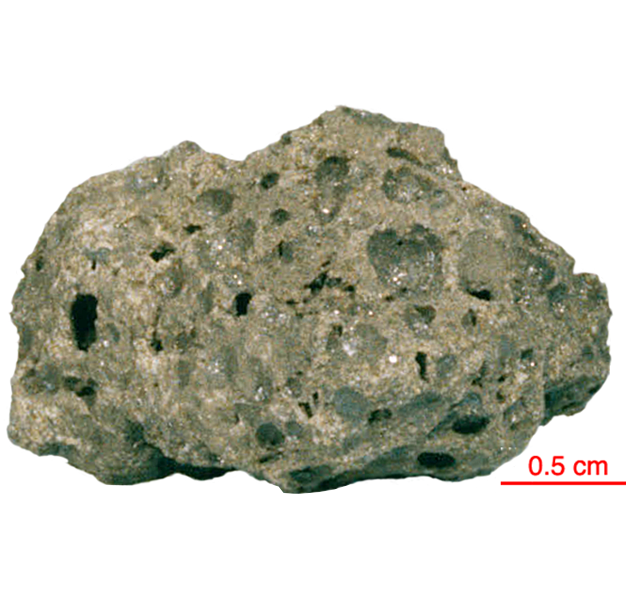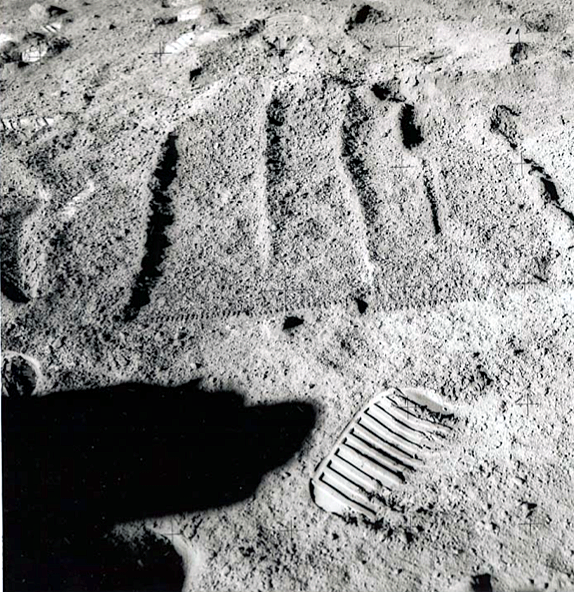
Fact sheet
15614, 15616, 15620, 15622, 15623 and 15630 are small fragments of vesicular mare basalt which were collected as part of a rake sample. Their chemical composition is that of an olivine-normative basalt, but olivine does not form obvious phenocrysts (see rotation 2). Pyroxene, olivine and plagioclase form an interlocking network that is peppered by minute opaque minerals; ilmenite and spinel. Small grains of metallic iron and troilite are also present. Vesicles are less than 1mm. Pyroxene is red-brown in colour and chemically zoned.
The sample weighed 9.7 grams before analysis and has not been dated.
Further details of this and other Apollo samples are here: http://curator.jsc.nasa.gov/lunar/
The Apollo 15 landing site was in the Apennine Highlands, and close to Hadley Rille — a long, narrow winding valley. Approximately 76 kg of lunar material, including soil, rock, core-tube and deep-core samples, were returned to Earth.
This mission was the first flight of the Lunar Roving Vehicle which allowed the astronauts to venture further from the Lunar Module than in previous missions. During three periods of extravehicular activity, or EVA, on July 31st, and August 1st and 2nd, Scott and Irwin completed a record 18 hours, 37 minutes of exploration, travelling 17.5 miles, in the first car that humans had ever driven on the Moon.
Apollo 15 was launched on 26 July 1971.







